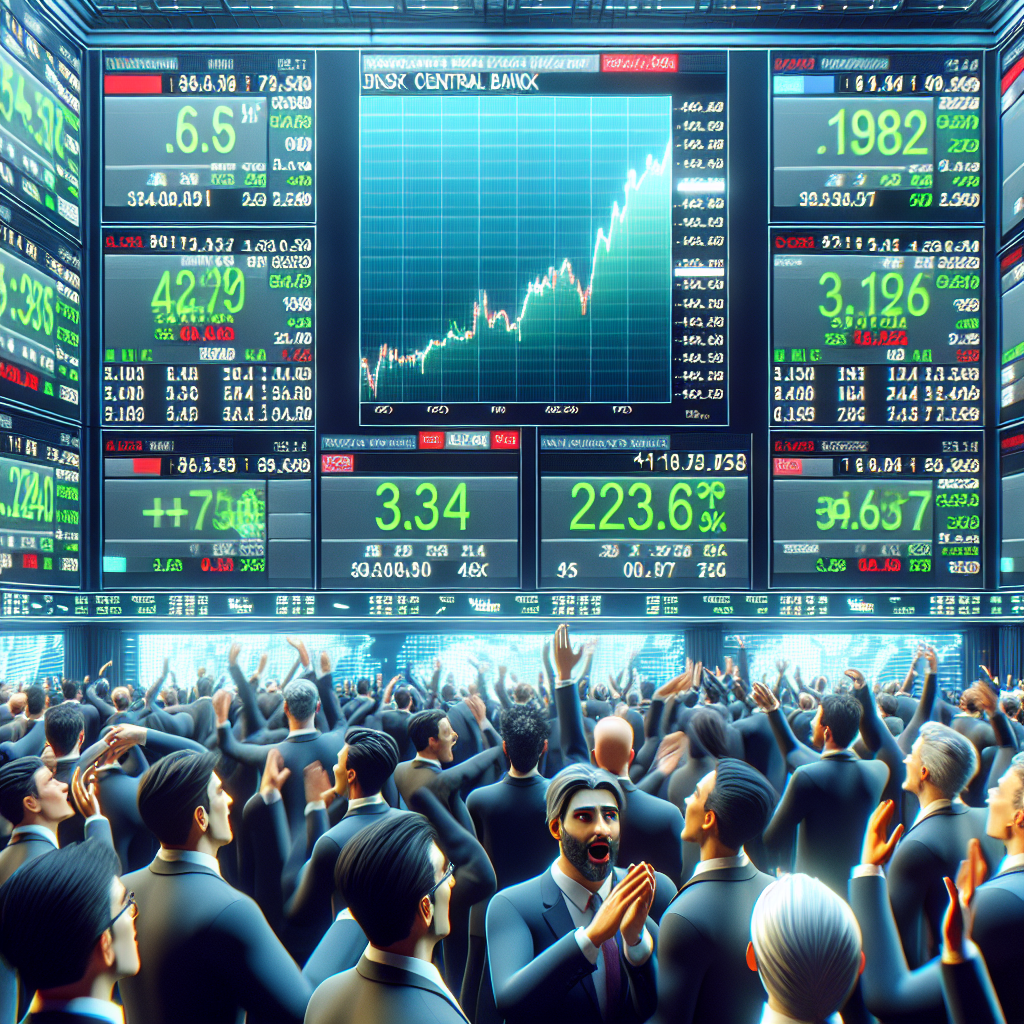The U.S. stock market surged across the board on Friday (22nd), with the Dow Jones Industrial Average skyrocketing 846 points to reach a new closing high. Federal Reserve Chairman Jerome Powell hinted at a possible rate cut in September, boosting market sentiment and prompting investors to enter the market, driving both the S&P 500 and Nasdaq indices to bounce strongly. This marks the first time since December last year that the Dow has set a new closing record, indicating Wall Street’s enthusiastic response to policy signals.
On Friday, the Dow Jones Industrial Average surged 846.24 points, a 1.89% increase, closing at 45,631.74 points, surpassing the previous high record set on December 4, 2024.
The S&P 500 index rose by 96.74 points, a 1.52% increase, reaching 6,466.91 points, ending a five-day downtrend, with only 1 point away from last week’s new high.
The Nasdaq Composite Index surged by 396.22 points, a 1.88% increase, to 21,496.54 points.
Additionally, representing small and medium-sized stocks, the Russell 2000 index, which is more sensitive to interest rates, surged by 4.1%, reaching the highest level so far this year.
Overall, both the S&P 500 and the Dow closed higher this week, while the Nasdaq fell by 0.6% as investors’ interest shifted from large-cap tech stocks to lower-priced sectors.
During the global central bank annual meeting held in Jackson Hole, Wyoming, Powell reviewed that the Federal Reserve policy rates had been maintained in the 5.25% to 5.5% range for over a year, stating that “such a tightening policy stance is appropriate, helping to curb inflation and promote sustainable balance between total demand and total supply.”
He pointed out that the current policy rates are “closer to the neutral level by 100 basis points than a year ago, and the stability of the unemployment rate and other labor market indicators allows us to act prudently when considering adjusting the policy stance.”
He also emphasized that “with the policy still in a tightening range, a shift in baseline prospects and risk balance may require us to adjust the policy stance.”
The market interpreted Powell’s remarks as suggesting a rate cut in September. According to data from the Chicago Mercantile Exchange (CME), traders believe the probability of a rate cut in September has increased from about 75% earlier this week to 90%.
Nigel Green, CEO of the financial advisory company deVere Group, pointed out, “Powell has shown the best skills of central bank officials – keeping options open.”
“If a rate cut can be made in September, it will reassure households and businesses,” said Green. “Delaying will only increase the risk of an economic hard landing.”
Chris Zaccarelli, Chief Investment Officer at Northlight Asset Management, stated, “Now, the Fed faces an extremely high threshold to keep interest rates unchanged in less than a month.”
In Friday’s rebound, eleven of the major sectors in the S&P 500 saw gains, with non-essential consumer goods sector leading with a strong 3.18% increase.
The Philadelphia Semiconductor Index rose by 2.7%, benefiting technology hardware and chip stocks. However, funds are also shifting from high-valuation large-cap tech stocks to traditional blue-chip stocks and small-cap stocks.
The Russell 2000 index surged by 4.1%, indicating robust buying in interest-sensitive groups.
Analysts pointed out that this surge shows that the market is no longer solely supported by artificial intelligence (AI) themes. Brian Jacobsen, Chief Economist at Annex Wealth Management, said, “This indeed shows that the market is not just about artificial intelligence. The industrial, transportation, and consumption sectors can all benefit from the clarity of tax and tariff policies.”
Large-cap tech stocks rose across the board on Friday. Tesla surged by 6.2%, leading the tech heavyweights. Intel rose by 5.5% after the U.S. government announced that it had acquired a 10% stake in the company, seen as a key move to strengthen America’s semiconductor leadership.
Coinbase’s stock price rose by 6.5%, as Powell’s comments spurred investors to buy cryptocurrency-related stocks.
Other tech giants also benefitted, with Nvidia rising by 1.7%, Meta Platforms climbing by over 2%, and both Alphabet and Amazon rising by over 3%. Apple’s stock price rose by 1.7%, amidst reports that the company is considering using Google’s Gemini technology to upgrade its voice assistant Siri, a move that also drove Alphabet’s rise by over 3.5%.
Several non-tech companies also saw significant gains. Homebuilders Lennar, PulteGroup, and D.R. Horton all rose by over 5%, as investors bet that loose rates would stimulate the sluggish housing market.
Stocks related to travel and entertainment also saw gains, with Norwegian Cruise Line rising by 7.2%, Delta Air Lines by 6.7%, and Caesars Entertainment by 7%.
Among the Dow components, traditional blue-chips like Caterpillar and Home Depot also led the gains.
UBS Global Wealth Management once again raised its year-end target for the S&P 500, betting on corporate earnings resilience, easing trade tensions, and rate cut expectations.
However, Zak Stambor, Senior Analyst in Retail and E-commerce at Emarketer, cautioned, “Investors are celebrating Powell’s remarks like participating in a rate cut parade. But a rate cut once is not going to substantially change consumer spending. The bigger question is: does this signal a real shift in Fed policy.”
Stambor warned that if tariffs continue to drive prices upwards, it may “force the central bank to hit the brakes before a shift begins.”

